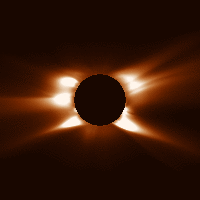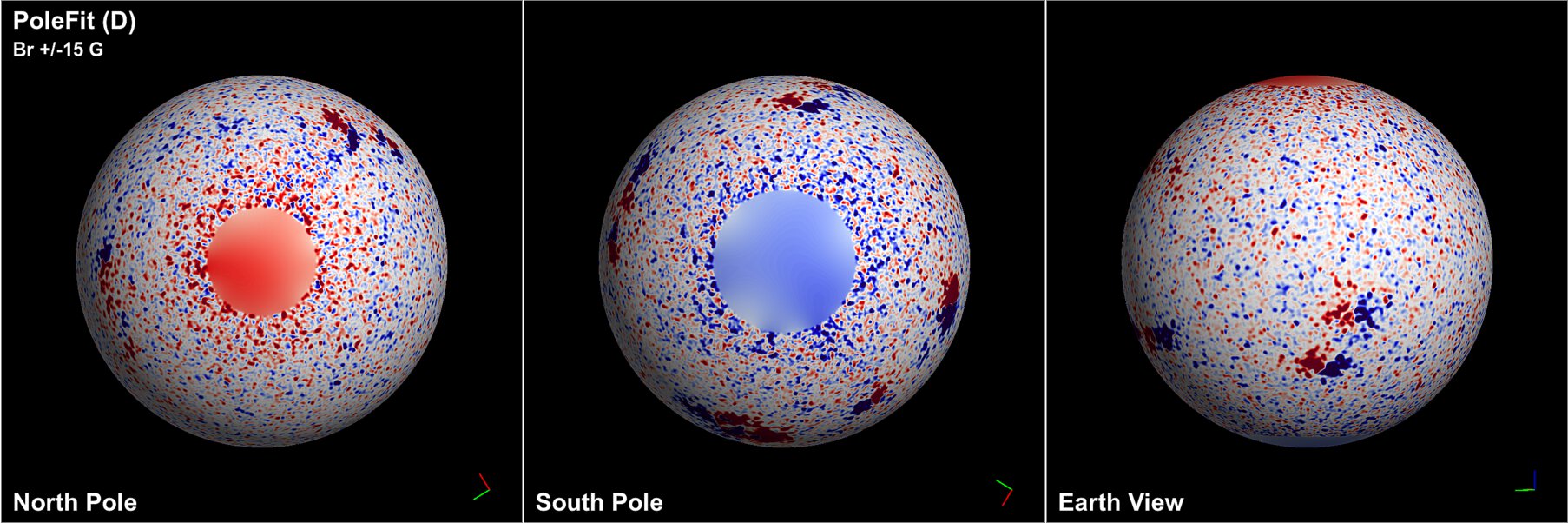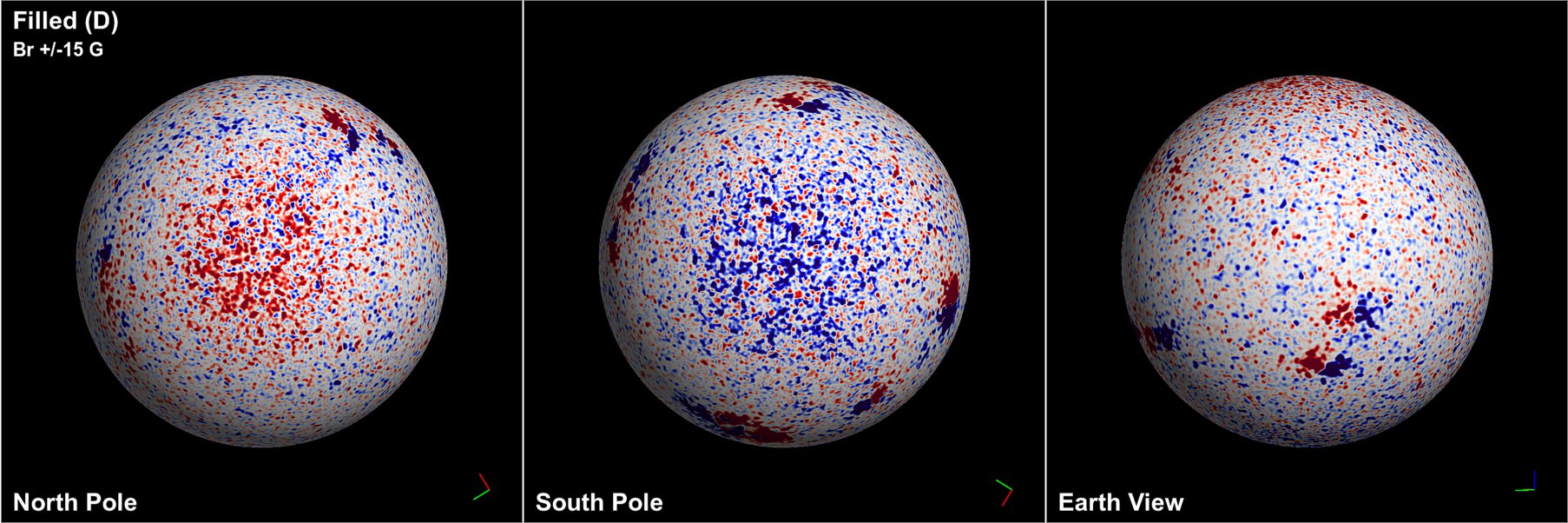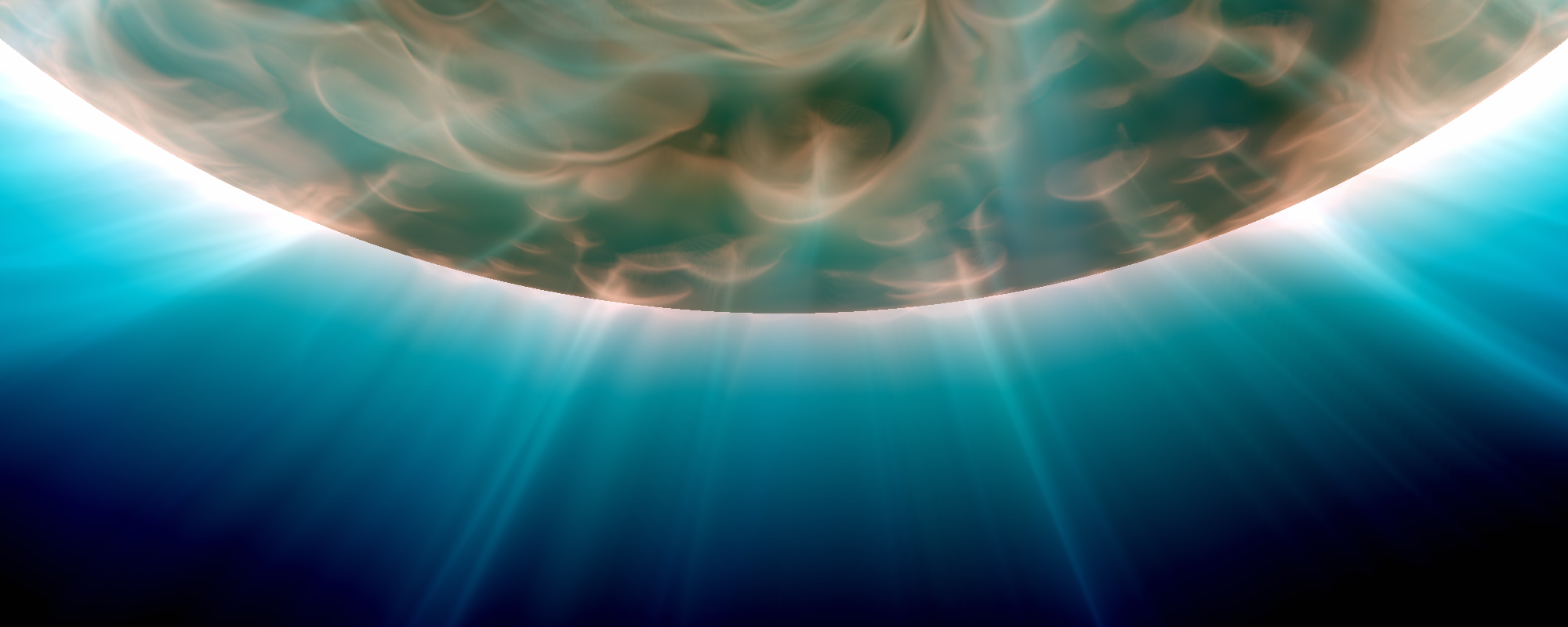The magnetic fields at the north and south pole of the Sun play a crucial role in shaping the structure of the
coronal magnetic field. However, we only observe the magnetic field from the Sun-Earth line, and the magnetic
fields at the poles remain poorly constrained.
As in our prediction for the
July 2, 2019 eclipse,
we fill the poles using a special technique for handling
polar magnetic fields. First we carefully estimate the average net magnetic flux at the poles by analyzing a
special series of SDO/HMI observations. Then we fill
the unobserved portions of the poles with a combination of positive and negative flux patches. Our filling
algorithm is designed to match the average character of flux-elements near the pole and the net flux estimated
for the whole area.
The images below compare a smooth extrapolation of the magnetic field towards the poles and the filled map at high resolution. This filled map is used to create the magnetic boundary conditions, which is further smoothed to match the resolution of the simulation.
Most interestingly, adding mixed polarities at the poles leads to additional structure and complexity in the magnetic field there. We can visualize this by zooming in on the squashing factor movie in the polar regions. Here we see sharp, ray-like features emerging from the mixed polarity regions at the poles, particularly within coronal holes (open magnetic field regions). These features are reminiscent of the plume or ray-like features typically observed at the poles during solar eclipses.

 Polar Fields
Polar Fields





